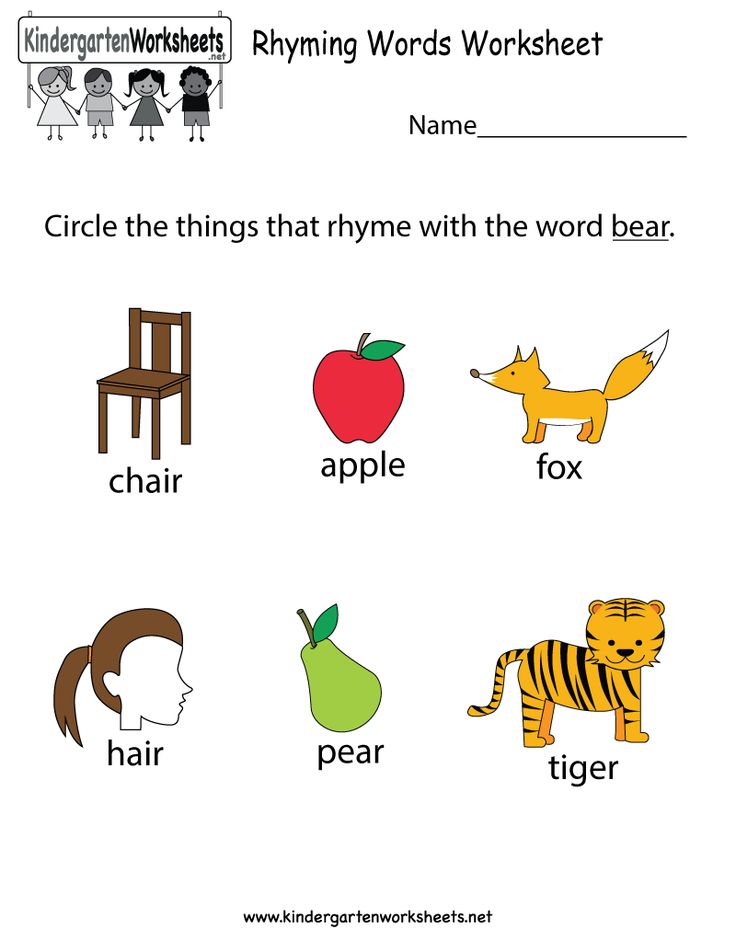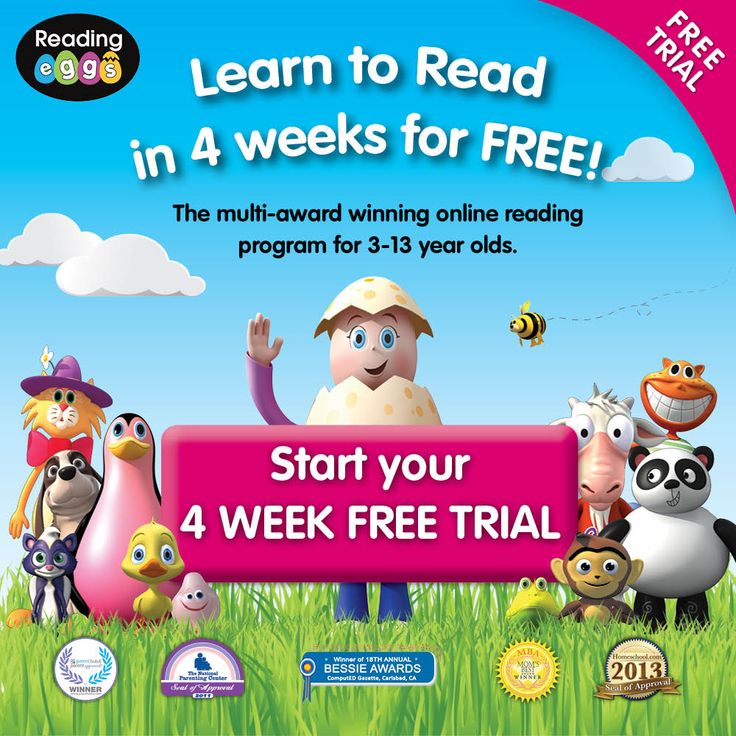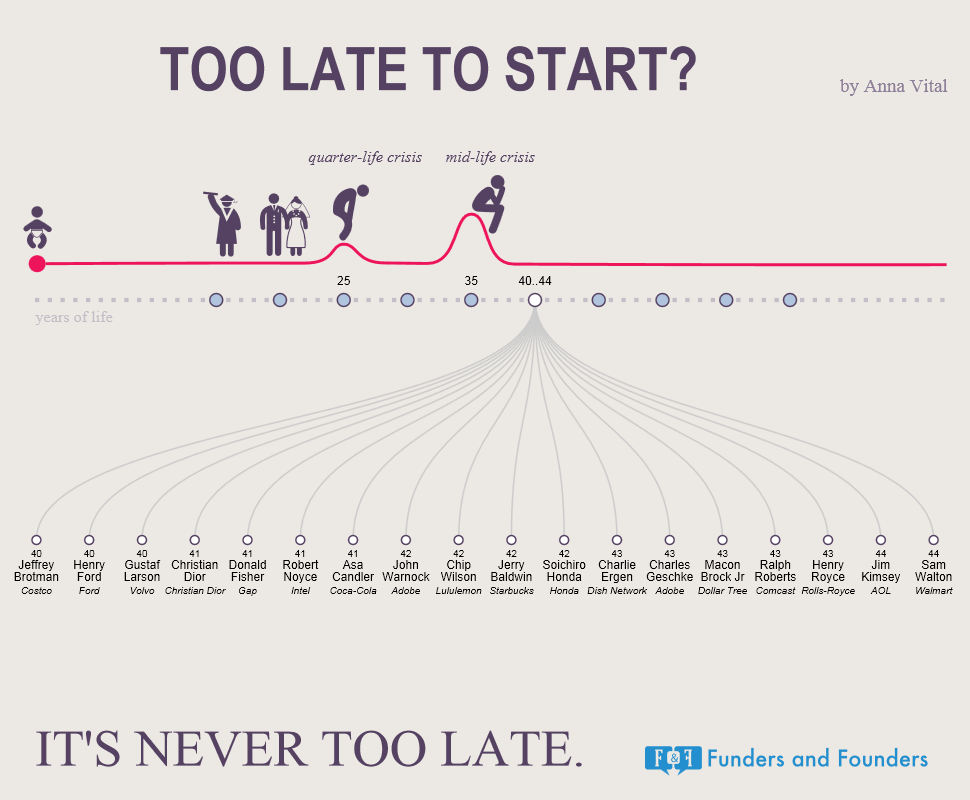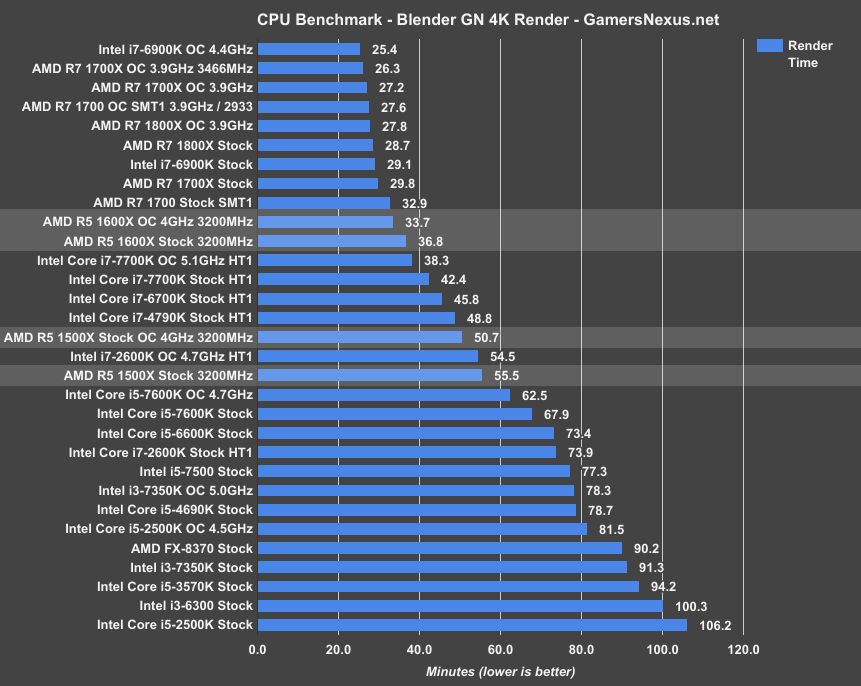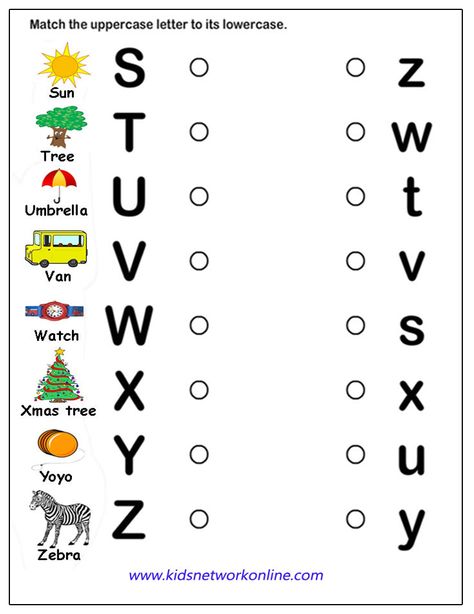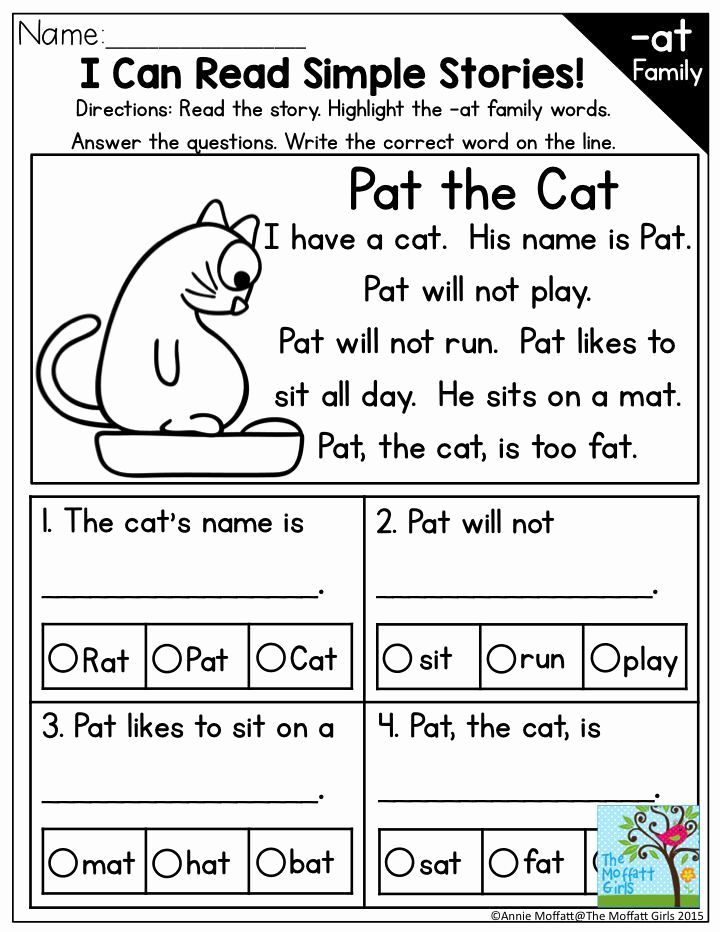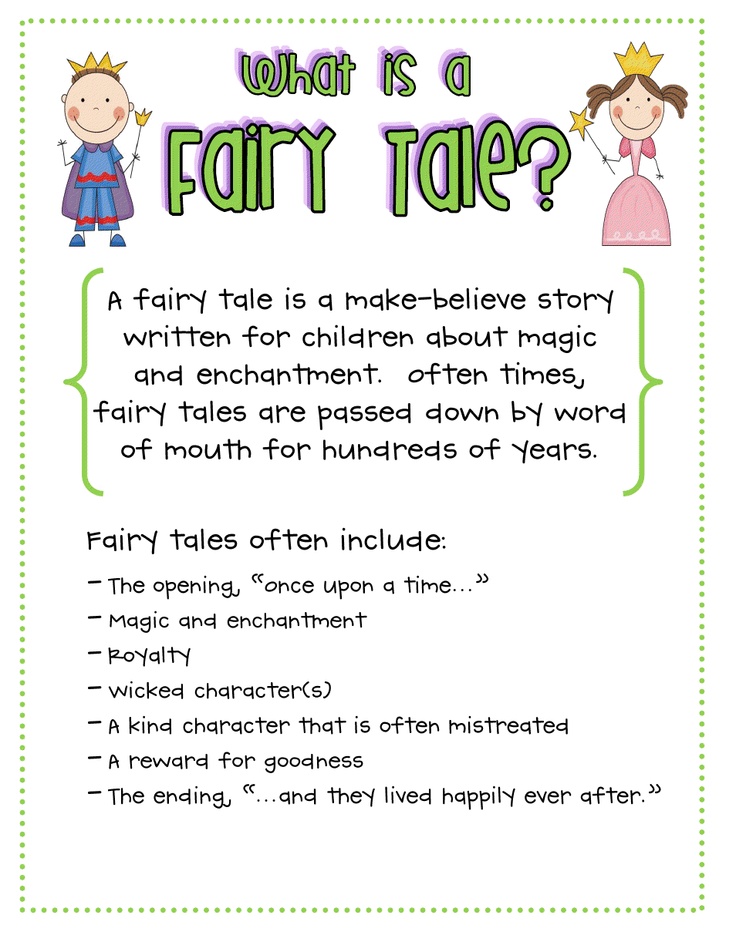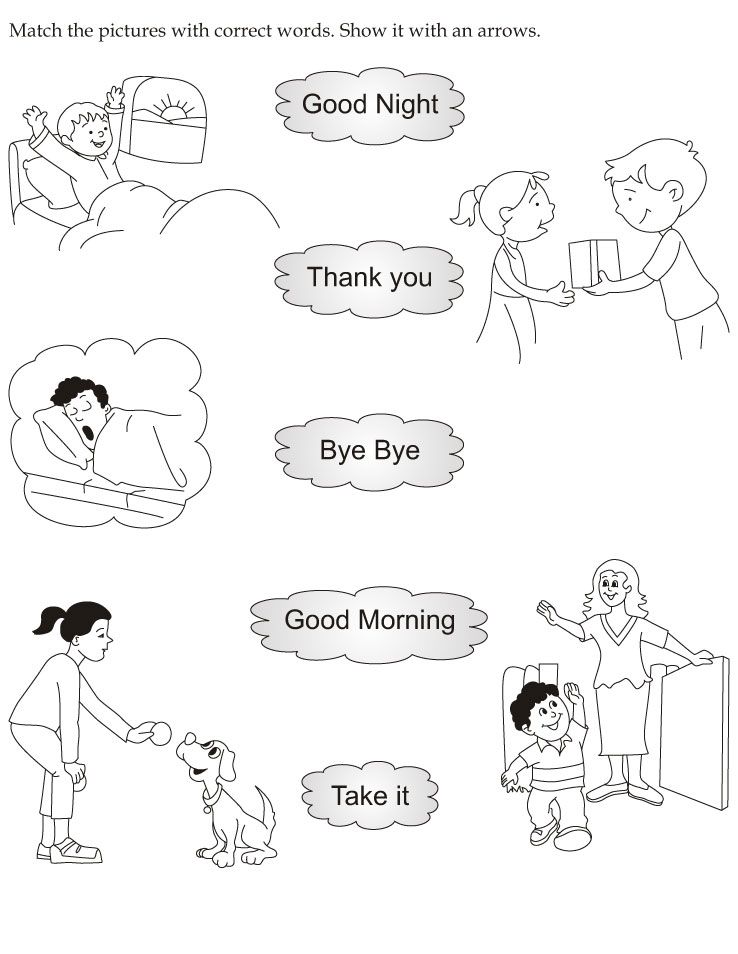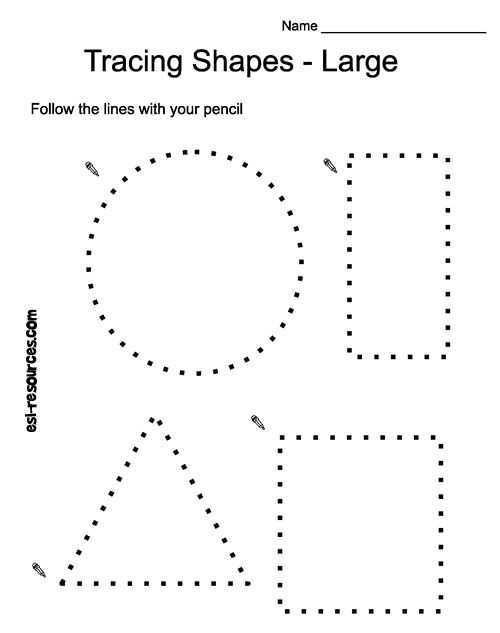Teaching rhyming words
5 Ways to Teach Rhyming (+ Free Printable Downloads)
by Marie Rippel
Did you know that rhyming is one of the best predictors of how easily a child will learn to read? That’s because good rhymers are better equipped to notice that rhyming words often have shared letter sequences, such as –all in tall, ball, and small, which in turn gives them a considerable head start in learning to read.
What Is Rhyming?
That may seem like a silly question, but it can be difficult to explain the concept of rhyming to a child who just doesn’t “get it.” Here’s a simple definition. When two words sound the same at the end, like duck and truck, they rhyme.
Most children enjoy hearing and participating in rhyming activities, and when they are exposed to rhyming, they usually pick it up naturally. But if your child isn’t good at rhyming yet, don’t worry! There are many things you can do to help.
Does Your Child Know How to Rhyme?
Use this simple test to find out whether your child knows how to rhyme. If your child needs help in this critical area, read on to discover how to teach your child to recognize and produce rhyme.
Three Stages of Rhyming Ability
It’s helpful to know that children don’t just start off rhyming. In fact, they generally go through three stages. In the order of easiest to hardest, those stages are:
Hearing and recognizing rhyme are important skills your child must master before he can produce rhyme, so be sure to focus on these skills first. Modeling can be a great way to help your child hear rhyme.
Here’s an example of modeling: “Duck and truck rhyme! They both end with uck! Say it with me: uck-uck, duck, truck!”
But hearing rhyme is just the beginning. The activities below were designed to help you teach your child all three stages of rhyming!
5 Simple Ways to Teach Rhyming
Read rhyming picture books together.
There are hundreds of great rhyming books, and this Rhyming Picture Books Library List is a good place to start.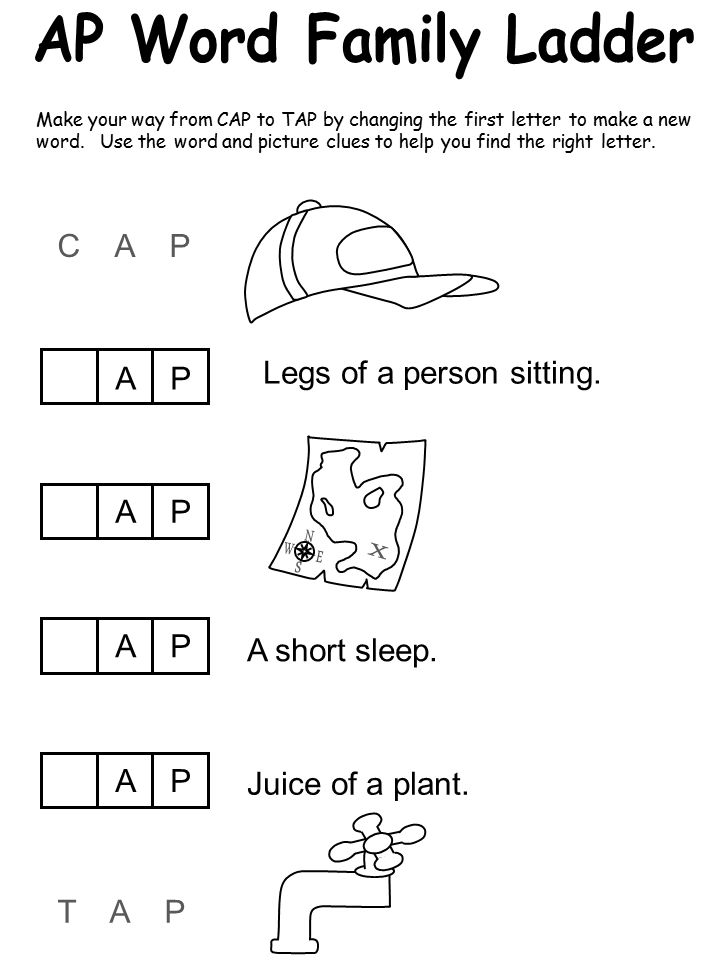 As you read, occasionally point out words that rhyme. (“Oh, goat and
boat rhyme! They sound the same at the end. Goat, boat.”)
As you read, occasionally point out words that rhyme. (“Oh, goat and
boat rhyme! They sound the same at the end. Goat, boat.”)
Play “Get Out of the Wagon” with your child.
“Get Out of the Wagon” is a popular Stage 2 rhyming game. In this downloadable activity, three word cards—like rake, cake, and king—are placed in a wagon. The child determines which word doesn’t rhyme and tells it to “get out of the wagon.”
Share nursery rhymes with your child.
Nursery rhymes are conducive to reciting again and again. After your child knows the nursery rhymes, let him fill in the rhyming words to work on Stage 2. On this downloadable library list, you’ll find some wonderful nursery rhyme collections to enjoy together.
Play “What’s in My Bag?” with your child.
Once your child can successfully recognize rhymes, this activity will help him learn to produce rhymes (a Stage 3 skill). Just fill a bag with several common household items (here are some ideas) and you’re ready to play “What’s in My Bag?”
Play “Dinner Time” with the whole family.
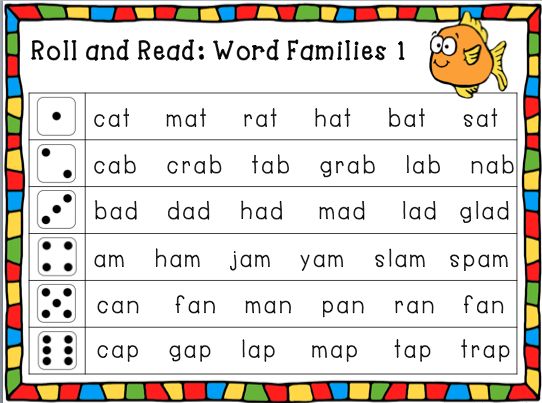
For more advanced Stage 3 rhyming, download this fun “Dinner Time” game. But make sure to play “Dinner Time” with the whole family. It’s guaranteed to provide lots of giggles for kids and parents alike!
The Bottom Line on Teaching Rhyming to Your Child
- Rhyming is an important pre-reading skill that reaps dividends later on.
- The ability to rhyme occurs in three unique stages.
- Use books, games, and engaging activities to promote rhyming ability. We make it easy by including hands-on activities throughout our Pre-reading program, and we continue to reinforce rhyming throughout the All About Reading program.
It may not happen overnight, but with repeated exposure, your child will learn to rhyme. Most importantly, keep your rhyming practice fun and light—it shouldn’t feel like a “lesson” to a young child.
Is there a rhyming activity that your child enjoys? I’d love to hear about it in the comments below.
_________________________
Photo credit: Rachel Neumann
How to Teach Rhyming - Structured Literacy
Rhyming is an important first step in the reading development for children. When a child learns to rhyme, they learn to focus on how language works. They also begin to notice all the individual sounds within each word.
If your child knows that jig and pig rhyme, then they are focused on the ending ig but also that the j and p are different sounds.
Because rhyming skills are significant predictors of children’s later success in learning to read, every effort should be made to give young children the opportunity to develop these rhyming skills. (Majsterek, Shorr, & Erion, 2000; Mitchell & Fox, 2001). Here are some strategies and activities on how to teach rhyming to your children so that they will have the opportunity to develop strong reading development skills.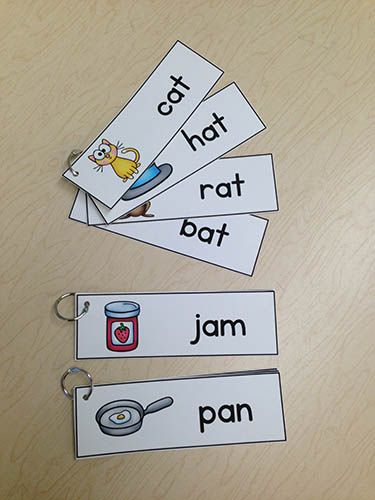
You can begin teaching rhyming by asking your child to identify and practice rhymes by manipulating, adding, deleting, or substituting sounds in words. Some examples of doing this are:
“Tell me all the words you know that rhyme with the word “hat.”
“Close your eyes. I am going to say 2 words. If they rhyme, raise your hand. If they don’t shake your head.”
“Say the word hat. Good. Say the word hat again, but change the /h/ to /b/.” (bat)
“Listen to these words – mop, plop, flop, tag. Which of these does not rhyme?”
“Can you finish my sentence for me. The cat sat on the _______.”
Use Letter Tiles
Use Letter Tiles to build rhyming words from the same family by placing the letter tiles for the ending sound in a row and stacking beginning letter tiles to make different words.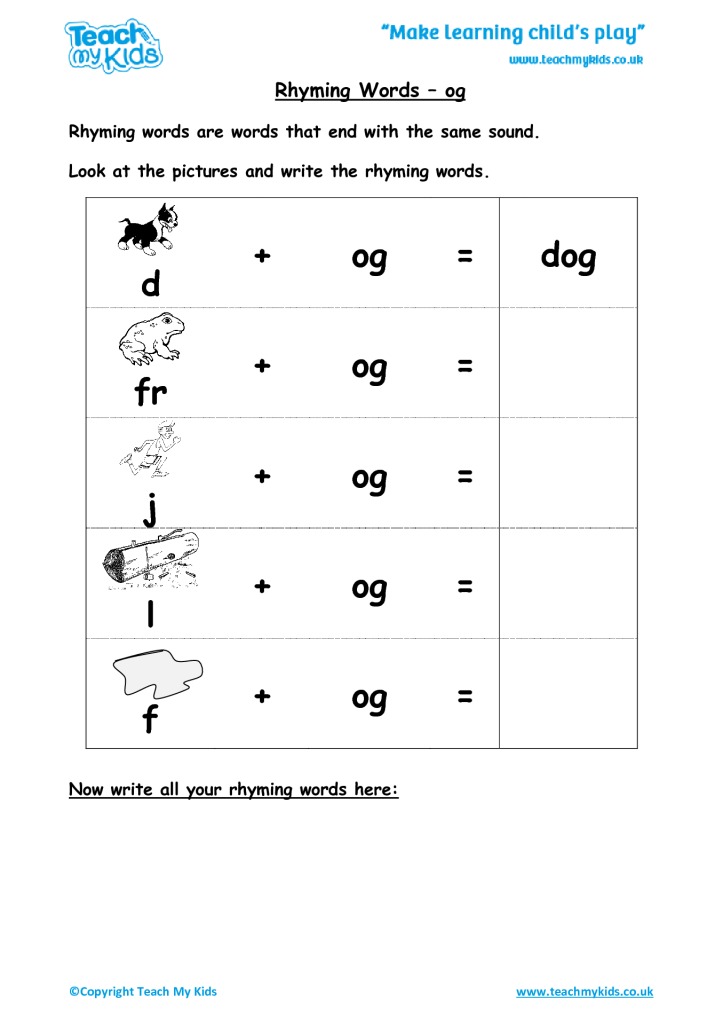
Use Beanbags
You will say a word (e.g., hat). You will then pass a beanbag (or anything else that is soft) to the child. The child will think of a word that rhymes with hat, say the word aloud and then pass the beanbag back to you.
The game continues with the beanbag being passed back and forth until you and the child can not think of any more rhyming words.
At that point, whoever is holding the beanbag begins the game with a new word.
Use Building Blocks
Write beginning letters and sounds on building blocks (or legos) and ending sounds on longer blocks. Let the kiddos build rhyming words.
You can watch this video to get an idea of how to use legos and building blocks for rhyming words:
You can practice rhyming with your child by reading stories and poems that use a lot of rhymes aloud together.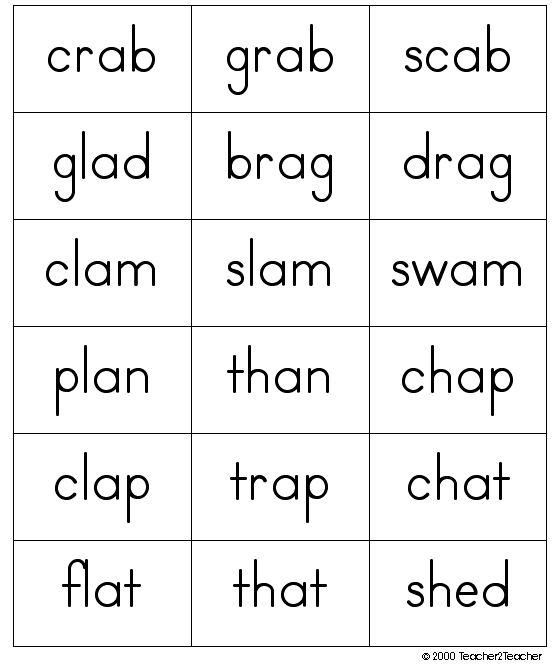
As you read, begin drawing attention to the sounds of the rhyme. For example you can say, “I hear rhyming words… dog and bog rhyme!”
You can also ask your child to predict the next word in the rhyming story (they love doing that). “The hog sat on the _______.”
As you read these rhyming books aloud, you will want to really exaggerate the sound of the rhyming words.
My Top Favorite Rhyming Books:
Chugga-Chugga Choo-Choo by Kevin Lewis
Madeline by Ludwig Bemelmans
Four Fur Feet by Margaret Wise Brown
Moose on the Loose by C.P. Ochs
Chicka Chicka Boom Boom by Bill Martin Jr.
I Swapped My Dog by Harriet Zeifert
Llama Llama Red Pajama by Anna Dewdney
Jamberry by Bruce Degen
Mrs. McNosh Hangs Up Her Wash by Sarah Weeks
A Frog in the Bog by Karma Wilson
Rhyming Dust Bunnies by Jan Thomas
The Flea’s Sneeze by Karla Firehammer
Jesse Bear, What Will You Wear? By Nancy White Carlstrom
Make Your Own Rhyme Book
You can also have your child create their own Rhyme Book! Create the book with five blank pages. Have your child draw pictures of objects that rhyme or cut out rhyming pictures. Then bind the pages into a personal rhyming book.
Have your child draw pictures of objects that rhyme or cut out rhyming pictures. Then bind the pages into a personal rhyming book.
Another option is that if you don’t want to make a book…you can make a collage with pictures of objects that rhyme with one another.
Singing rhyming songs and rhyming chants is another great way to teach rhyming. Singing is so easy to fit into your daily schedule, as you can basically break out in song or chant any time of the day and it is so much fun to sing!
Before Bed:
“Twinkle, twinkle little star,
How I wonder what you are.
Up above the world so high,
Like a diamond in the sky.
Twinkle, twinkle little star,
How I wonder what you are.”
During Cleanup:
“Clean up, clean up, everybody, everywhere.
Clean up, clean up, everybody do your share.”
In the Garden:
“One little flower, one little bee.
One little blue bird, high in the tree.
One little brown bear smiling at me.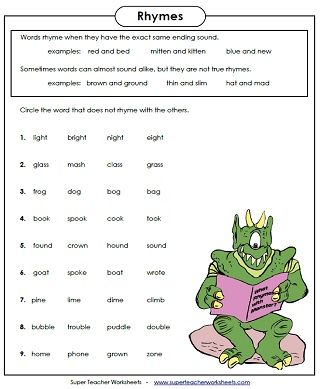
One is the number I like,
You see.”
I Have a Resource For You!
Thank you so much for reading my post on rhyming today. You might also enjoy reading my previous posts:
How to Teach Letters and Sounds Correctly
How I Help with b/d Letter Reversal
How to Teach Beginning Blending in Reading
Please don’t leave without checking out the PRIDE Reading Program. The PRIDE Reading Program is an Orton-Gillingham curriculum that is used by teachers, tutors, and homeschooling parents worldwide with great success.
PRIDE Reading Program
Does your child have a favorite rhyming activity? Let me know in the comments below. I’d love to hear about it.
Teaching preschoolers how to compose rhyming texts | Article on the development of speech on the topic:
Teaching preschoolers to compose rhyming texts
Mansurova Yu.S.
Teacher of the senior group No. 8 "Pencils"
One of the important tasks of teaching preschoolers is the formation of coherent speech.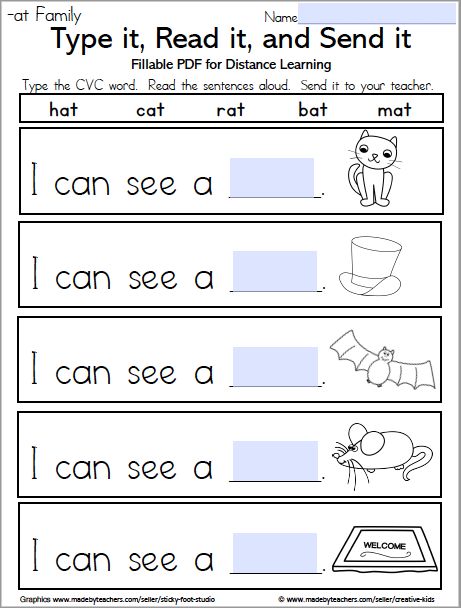 Children of senior preschool age should be able to independently compose monologue texts of a different nature. Signs of such speech are arbitrariness, expansion and coherence. In a monologue, the child constructs statements independently. He himself chooses the verbal form for expressing the content that he communicates, outlines the sequence of individual parts, links of the content. Whether it is a description of an object, phenomenon or event. It is important for the teacher: does the child own various means for expressing thoughts, are the same words and phrases repeated in one segment of speech?
Children of senior preschool age should be able to independently compose monologue texts of a different nature. Signs of such speech are arbitrariness, expansion and coherence. In a monologue, the child constructs statements independently. He himself chooses the verbal form for expressing the content that he communicates, outlines the sequence of individual parts, links of the content. Whether it is a description of an object, phenomenon or event. It is important for the teacher: does the child own various means for expressing thoughts, are the same words and phrases repeated in one segment of speech?
Such a form of monologue text as a poem contributes to the fact that children develop the ability to feel the artistic expressiveness of the word. Here the foundation is laid for the formation of love for the native language, its accuracy, accuracy, imagery. In practice, teaching preschoolers to create poetic texts, in our opinion, is given little attention. This fact is explained by the lack of effective methods and techniques for teaching children rhythm and rhyming. Without the word play that they contain, the child will not fully master his native language. After all, a rhymed text helps to express not only thoughts, but also feelings, experiences of a person.
Without the word play that they contain, the child will not fully master his native language. After all, a rhymed text helps to express not only thoughts, but also feelings, experiences of a person.
L, F. Pavlenko is working on the problem of teaching children word formation, rhyming, selection of descriptive characteristics of an object. The teacher proved the possibility of teaching children to compose poetic texts.
Researchers of the formation of children's speech and the characteristics of its development have established that children aged 3-5 have a natural need for versification. After all, a cheerful, funny, frightening or teasing poem is a “verbal toy”. And at the same time, children's poetry is a special, peculiar only to children, view of the world, embodied in the word.
In the methodological developments devoted to familiarizing children with the poetic word, it is rightly pointed out that it is necessary to form an interest in poetic texts. At the initial stages of work, it is necessary to arouse in children an interest in works of art filled with fantasy, humor, word games in rhymes, rhythms, and onomatopoeia. How can one learn to play poetry and with poetry? Of course, they need to be read to children, memorized. Otherwise, the game will not take place. The rules of the game are in the poem itself, in its purpose and content. Everyone knows, for example, nursery rhymes, fables, counting rhymes, teasers, tongue twisters, laughter and other poetic "hype", which is considered to be empty fun. All these are primarily games that teach either the rapid pronunciation of a difficult phrase, or a complex sound combination.
How can one learn to play poetry and with poetry? Of course, they need to be read to children, memorized. Otherwise, the game will not take place. The rules of the game are in the poem itself, in its purpose and content. Everyone knows, for example, nursery rhymes, fables, counting rhymes, teasers, tongue twisters, laughter and other poetic "hype", which is considered to be empty fun. All these are primarily games that teach either the rapid pronunciation of a difficult phrase, or a complex sound combination.
The more often poems are repeated, the more riddles, jokes, onomatopoeia, shifters and other games can be seen in them. This, in turn, will help to take another step towards a new hobby - writing your own rhyming texts, and later your own poems. The acquired ability to compose is also a game and, at the same time, a reward for work. It opens the way for the child to the priceless treasures of world poetry and to his own speech creativity.
As a result of a practical study, the following stages of work were identified:
- Acquaintance of children with the algorithm for creating a short poetic text.

- Collective compilation of the text according to the algorithm.
- Creation of poetic texts by subgroups and small groups.
- Individual compilation of poetry texts by children.
Teaching preschoolers to create rhyming texts should start at the age of three. Researchers of children's speech found that children from 3 to 5 years old have a natural need for versification. A cheerful, funny, frightening or teasing poem is a child's verbal toy, and at the same time children's poetry.
Without the word play contained in rhyming texts, the child will not be able to master the richness of his native language. After all, a rhymed text helps to express not only thoughts, but also feelings, experiences of a person.
Problems of teaching rhyming.
Second junior group
Teach children to find words that rhyme with each other, for example: bird - titmouse, cat - mouth, etc. Encourage children to create two or three rhyming lines (semi-active stage) for objects depicted in the picture, described in fairy tales, or from the immediate environment.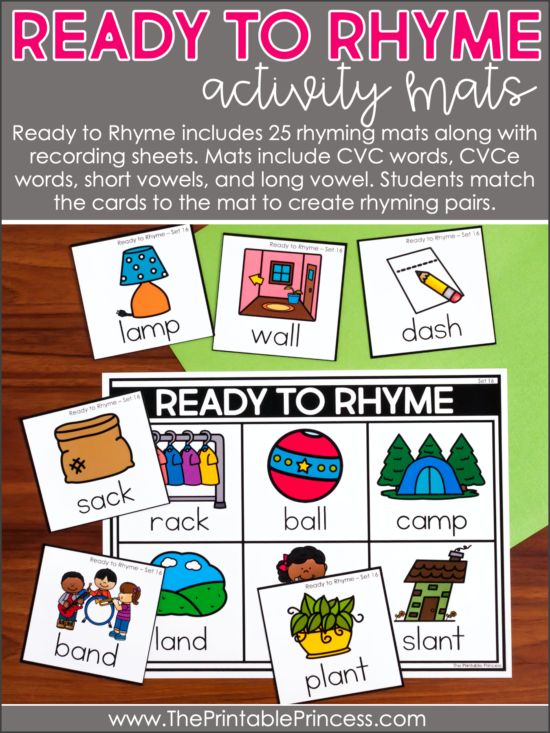
Middle group
Continue to teach children to find words that rhyme with each other and create two or three rhyming lines (active stage) according to the objects depicted in the picture, described in fairy tales, or from the immediate environment.
Encourage children to create four-line rhymes.
Senior group
Teach children to independently find nouns that rhyme with each other (laziness - stump), verbs (ran - lay), adjectives (beautiful - cute), adverbs (easy - deep). Learn to analyze the content of the poem and establish cause-and-effect relationships indicated in the text.
Preparatory group
To teach children to independently find words that rhyme with each other and create four rhyming lines based on objects depicted in the picture, described in fairy tales, or from the immediate environment. To form the ability to compose rhymes using a variety of models.
The second junior group
I started working on compiling rhyming texts in the 2nd junior group in the second half of the year. The first thing the children got acquainted with was a game called "Folding Pictures" bright, colorful, single pictures. They looked at them with pleasure. Then I suggested that each picture find a pair, (starting with 5 pairs of pictures, gradually increasing), but such that when you pronounce the picture, you get a song. We called this song rhyme. And in order to interest the child, I dressed up the doll and gave her a name - "Aunt Rhyme", who visited us throughout the year. I used games from the "Collection of methodological materials MDOU No. 242" Sadko "2004.
The first thing the children got acquainted with was a game called "Folding Pictures" bright, colorful, single pictures. They looked at them with pleasure. Then I suggested that each picture find a pair, (starting with 5 pairs of pictures, gradually increasing), but such that when you pronounce the picture, you get a song. We called this song rhyme. And in order to interest the child, I dressed up the doll and gave her a name - "Aunt Rhyme", who visited us throughout the year. I used games from the "Collection of methodological materials MDOU No. 242" Sadko "2004.
"Folding pictures"
Purpose: to teach children to match pictures of objects whose names rhyme.
Move: the teacher lays out about 40 images, the names of which rhyme. The teacher raises a picture and asks to find a pair of rhymes. The game is considered over when 20 pairs are stacked.
"Folding pictures" (Luli rings)
Purpose: to teach children how to work with Luli rings; choose rhyming words.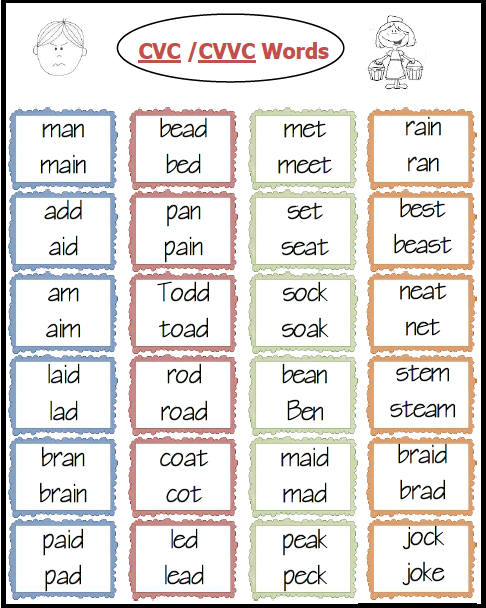
Move: On a small circle in the sector of the picture, and to them we will select rhyming words that are located on a large circle.
"Say a word"
Purpose: focusing on the endings of verbs and nouns, select words to rhyme.
Move: The teacher reads short passages, the children agree on the ending.
1. Bunny drums loudly.
He is a serious business ... (busy).
2. The shepherd wakes up first,
Before the shepherd gets up ... (rooster).
3. Hedgehog - the watchman of the tower -
The evil fox has pressed ... (sides).
4. Snowman - "carrot nose" -
Christmas tree to our home ... (brought it).
"Guessing riddles"
Purpose: to form the ability of children to listen, to pronounce words, picking up riddles in rhyme
Move: The teacher reads riddles, and the children guess.
1. In the summer in the swamp
You will find her,
Green frog.
Who is this? …. (frog)
"Find a rhyme"
Purpose: To continue learning how to create a rhyme and find similar-sounding words.
Move: With the children we select words similar in sound to one word:
Bridge - tail - toast, etc.
Bird - pizza - titmouse, etc.
Pillow - frog - tub, etc.
Then the teacher reads the quatrains and asks the children to find the words in rhyme.
There is a cat with a mustache
Wanders around the garden,
A horned goat
Follows the cat.
etc.
"Riddles - Sayings"
Purpose: To develop a sense of rhyme, to develop a vocabulary.
Move: The teacher reads riddles, the children guess them.
1. I am a little bird -
My name is .... (titmouse).
2. In winter it is like fluff, then hard,
In summer it is called .... (water).
3. You warm the whole world
And you don’t know fatigue,
You smile at the window,
And everyone calls you .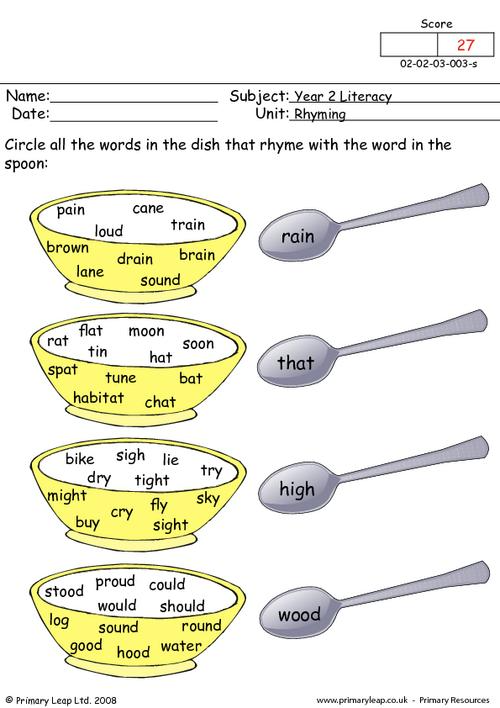 ... (sun).
... (sun).
4. We are happy to overtake each other,
Look, my friend, don't fall!
Good then, light
Fast…. (skates). Etc.
"Who becomes who?"
Purpose: to exercise children in the selection of words to rhyme.
Move: the teacher reads a poem by A. Shibaev (“For the smallest”, “Naughty children”, “Samovar”) and the children finish the words.
Once upon a time there was a little puppy,
He grew up, however,
And now he is not a puppy,
Adult .... (dog).
A mighty giant bull,
In childhood he was ... (a calf)
A foal every day
He grew up and became ... (horse)
Lesson summary for children of the younger group
Visiting Aunt Rhymes.
Program content:
- to teach children to select pictures depicting objects whose names rhyme;
- to teach children to work with Lulia rings;
- to teach children to choose rhyming words.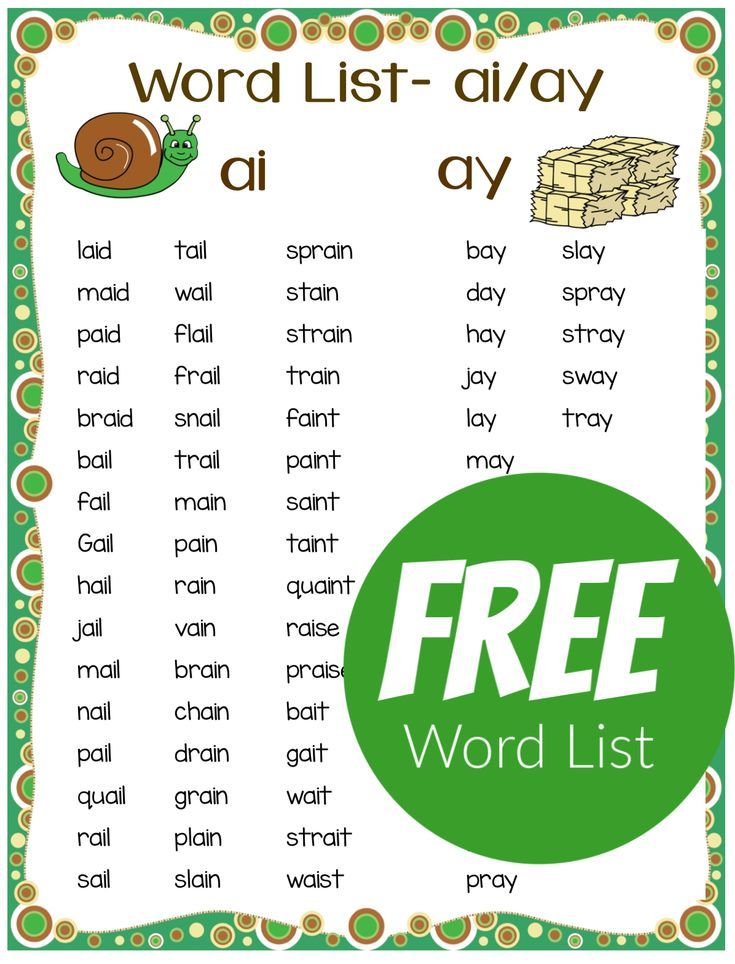
Organizational moment.
- The day has come.
-I will smile at you and you will smile at each other. It's good that we're all here together.
-How do we feel? (friendly, kind, calm, joyful, affectionate).
There is a knock on the door.
- Guys, Aunt Rhyme came to visit us.
- Tell me, please, what is a rhyme? (Children's answers)
- It's right when the words sound good.
- Auntie Rhyme offers to play a game called "Skladushki-okladushki".
Working at tables.
- Come here, we will play with magic rings.
- What are they called? (Rings of Lulia).
- On a small circle, in this sector of the picture, and to them we will select folding words that are located on a large circle.
- Look at the picture, who do we see? (Frog).
- And now let's pick a rhyme for the word frog.
Physical education minute.
- The next game is called Say a Word.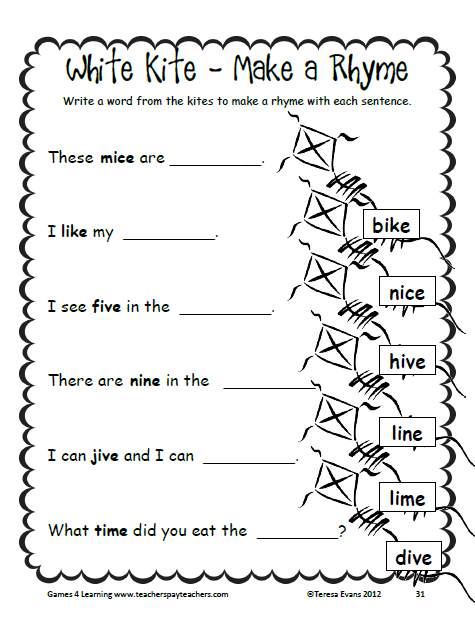
- I will read the sentence and you will finish it.
- Elephant with a trunk like a shower,
Washes the back, washes ... (ears).
- We baked from flour,
with onions, meat .... (pies).
- Without a key, you believe me,
you will not open this .... (door).
- The shepherd wakes up first,
Before the shepherd gets up ... (rooster).
Result:
- Well done guys, Aunt Rhyme really enjoyed playing with you.
- Did you like it?
- Which game did you like best?
- How did we play? - Will we still play?
Middle group
The next stage of work is to create limericks. Limerick is a short poem, which consists of five lines and is written in the genre of nonsense (specified absurdity). First, limericks are created by a group of children, where the educator takes the leading role,
While compiling the limerick, the child can invent words in rhyme, but these words are not in Russian.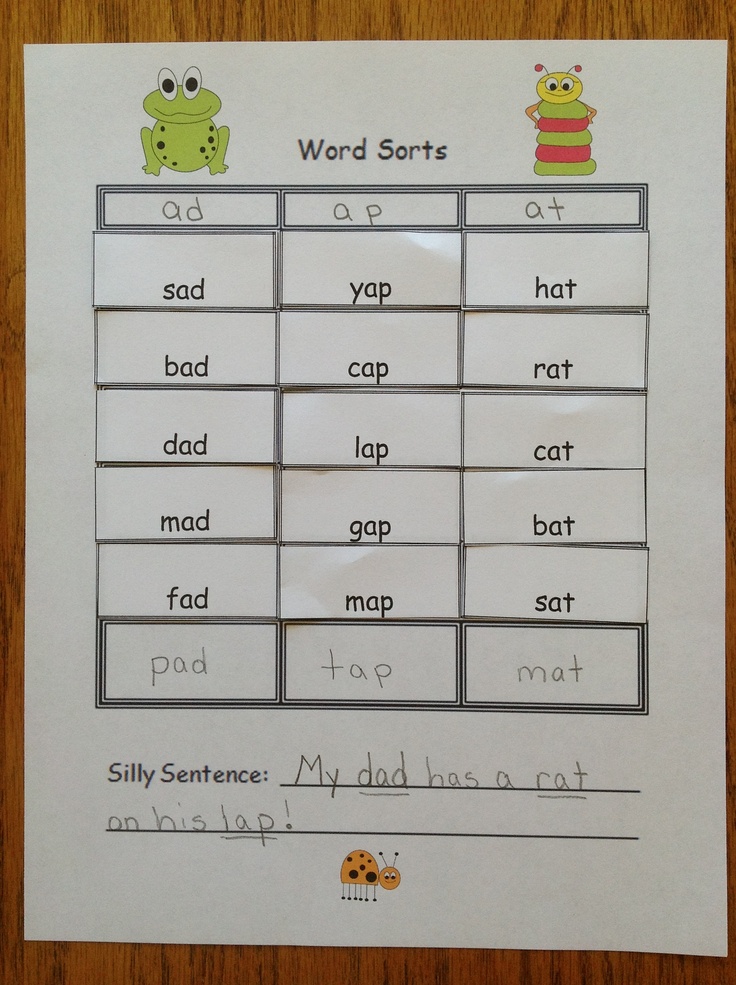 In principle, I left this invented word, but with the condition that he explains its meaning, this is also the way the children's word creativity is formed. To begin with, the child must be introduced to the rule of working with the scheme:
In principle, I left this invented word, but with the condition that he explains its meaning, this is also the way the children's word creativity is formed. To begin with, the child must be introduced to the rule of working with the scheme:
| 1 line | Core - was (object) |
| 2 line 2 | ? (Comparison or reference to a property of an object) |
| Line 3 | What did you do? (Action or interaction with other objects) |
| 4 line | Who did you communicate with? |
| 5 line | Conclusion | 6
9000

For example:
There was a cat, there was a river,
Her name was midge. She was hot as a stove.
She was small, She ran in the forest,
She slept on my palm. Warmed everyone up.
This is my cat. (Vova. *0002
Used games from the younger group and supplemented
"Circles on the water"
Purpose: To develop creative imagination, find rhymes.
Move: Guys, let's play with words, what they evoke in you, what associations, what combinations you can get.
For example: "lemon"
- He .... (sour, yellow…)
- It is related to the L-word (fox, moon, spoon, etc.)
- it rhymes with …
lemon - loaf, lemon - balloon, lemon - law, lemon - bud.
Abstract of the middle group
Visiting Lesovichka.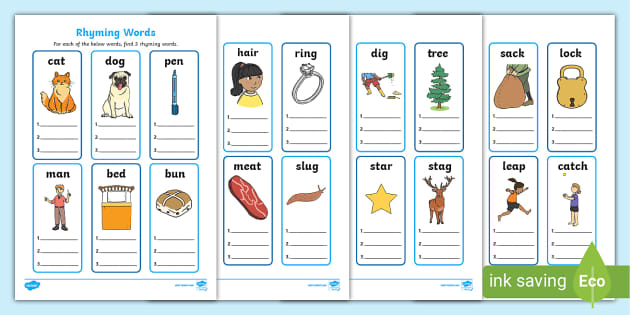
Program content:
- to consolidate the ability of children to select a rhyme for a given word;
- to develop the ability of children to analyze the content of the poem;
- to consolidate the ability of children to select rhyming words;
- to consolidate the ability to select words that are opposite in meaning.
Activity:
- Let's hold hands, look at each other, smile.
- Guys, I suggest you play a game called "Teremok". The one who picks up a rhyme for a given word will sit in my teremok.
Game "Teremok".
There is a teremok in the field, it is neither low nor high. The one who picks up a rhyme for the word pillow - frog, summer - candy, dot - lobe, potato - midge, egg - ring, window - grain, flower - sock, jacket - duck, crow - crown, spoon - earring
- Guys, a magical old man - Lesovichek will come to visit us today. Do you want to get to know him?
(Lesovichek enters).
- Hello sad guys!
- Hello lazy guys!
- Hello dirty guys!
- Hello evil guys!
- Well, what kind of dunno are sitting here!
V.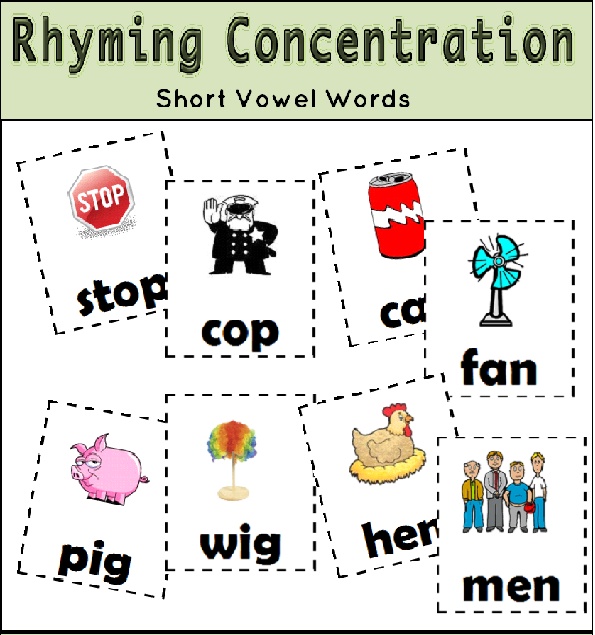 - It's not true Lesovichek, the guys learn everything from us and can even tell you something, somewhere.
- It's not true Lesovichek, the guys learn everything from us and can even tell you something, somewhere.
Guys, let Lesovichok read a poem about him.
An old old man lives in the forest, in a forest
He has a beautiful cap on him
He dances a hopachok,
Here is such a handsome old Lesovichek.
Physical education minute.
Game "About whom, about what?"
- Guys, what object are we talking about?
- What sign is our object endowed with?
- What actions did he perform?
- How did the author describe him?
- The guys in this poem hid rhymes.
L.- Rhyme? And what is it? What is it eaten with?
- Guys, tell Lesovichka what rhyme is. For example.
- Now let's find sonorous words in the poem.
- Guys, why do we need rhyme? To write poetry.
- Guys, let's try to compose a poem.
Compose a poem.
- What do we select first (object).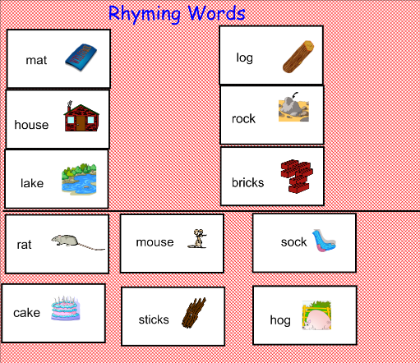
The first sentence - Once upon a time ...
- Then we need to characterize our object. What is his character.
-What actions does our object perform? What is he doing?
- What is our conclusion?
- Lesovichek, what do you have in your basket?
- I really love different pictures, so I brought them to show you
- Let's see, oh, rhymes are hidden here, let's pick them up.
L.- It's time for me to say goodbye, goodbye guys.
Total.
-It's good that Lesovichok came to visit us.
- Did you enjoy playing with him? And what did you like the most?
-Guys, are we still going to choose rhymes or is that enough?
-Will you compose poetry?
-I really enjoyed playing with you, goodbye.
Senior group
Rhymes improve mood, unite and organize children with their rhythm. They enliven classes, help many children overcome mental stress. Rhyming creates a feeling of self-confidence in the child, develops breathing, diction, hearing, tempo, and regulation of the strength of the voice.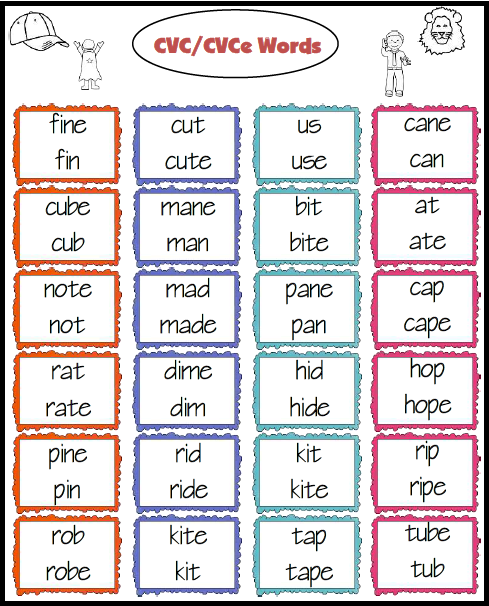 Expressive and emotional speech is formed.
Expressive and emotional speech is formed.
It also cheers up the child when parents take part in the creation of rhyming texts. The latter causes a feeling of joy and pride for them.
In order for the child not to lose interest in writing, we came up with the next stage of work.
Created a house of poetry, which allowed building poems according to the scheme. They came up with cards with the designation of a place, action, object. There can be several objects, actions, places in a poem, so the cards are numbered in order. If at the beginning of the poem the beginning begins from a place, then this is a card (No. 1). We do not put any cards on all other words, such as prepositions, conjunctions. We compose rhymed verses using the names of signs.
The rules for compiling rhyming texts have changed with increasing complexity:
1. We compose a poem from five lines.
2. The first and second lines rhyme with each other.
3. The third and fourth lines rhyme with each other.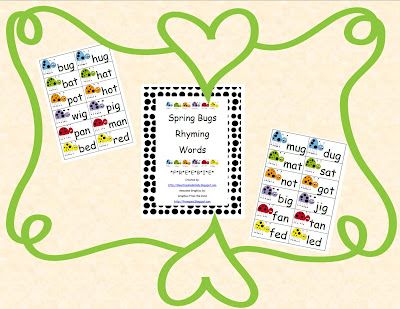
4. The fifth line is a conclusion and it does not rhyme.
5. We compose a poem using the names of signs.
6. The beginning of the poem begins the beginning, it can start from the object, and from the action, and from the place.
7. There can be several actions, objects, places in a poem.
8. After you have composed a poem, we draw a conclusion and give a name to the poem.
(Figure 1. Poemage house)
For example:
lived a bird,
just like a bad house,
at the House of Flying,
grains, pecking
Here is such a bird. (Snezhana Lapteva)
In this poem, the beginning of the vein was and it was composed without names of signs. We substitute the names of the signs after we have composed a poem and substitute them in front of the object, place and action.
Here's a funny poem using feature names:
Wet bird.
There was a wet bird,
Just like a multi-colored little bird,
It flew squarely around the house,
Grains pecked sourly,
You would be dry if you didn't fly in the rain. (Snezhana Lapteva)
During the choral pronunciation of rhymes, children can make movements, which causes delight in children.
(Figure 2. Table of signs)
"Warehouse - not a warehouse"
Purpose: to learn how to choose a rhyme for a given word.
Move: the host thinks of a word, the players come up with a rhyme.
For the next stage of work, it is necessary to teach the child to select rhymes for different parts of speech: verb, noun, adjective, adverb. You can make a didactic ball. This ball will be a hint for the teacher. Stick rhymes on the ball to different parts of speech - nouns cancer - poppy, flower - sock, duck - joke, etc. Verbs: ran - lay, played - called, pushed - blinked, etc. Adjectives: beautiful - massive, egg - wheat, etc. Adverbs: wide - far, deep - high. We named this game " Rhymed ball".
"Rhyming ball"
Purpose: to teach children to independently select rhymes for different parts of speech.
Move: the teacher calls a word of a certain part of speech, the children come up with a rhyme for it.
(Figure 3. Rhyme ball)
“WITHOUT PLASS”
Purpose: To teach children to select rhyme for sound combination
Move: the driver sets a certain sound combination, and the players compose a couplet with him sa - sa - sa - flew to us ... (wasp), scha - scha - scha - we found in the grass ... (tick), etc.
“Compose further”
Purpose: to teach children to match a rhyme to a given word.
Move: the teacher reads one line of the poetic text, and the children compose further.
Read poems, encourage children who have found a rhyme in a poem. These exercises encourage further writing.
About whom? About what?
Purpose: to teach to analyze the content of the poem and to establish cause and effect relationships indicated in the text.
Move: What is the object in question?
What features does the object have?
What did he do?
What conclusion did the author make?
The work of creating rhymes became the basis for the Smile project.
Purpose of the project:
1. Development of the social and emotional sphere of children of senior preschool age.
2. Raising children to actively display emotional responsiveness to others.
3. Mastering the culture of communication with adults and peers.
1. Practical part of the project
Ø Collection of information on the project (for what reason people smile).
Ø Project planning.
Ø Compilation of file cabinets (collection of funny pictures, funny toys).
Ø Creation of the Kingdom of Smile. “Ways to improve mood” Discuss with your child how you can improve your own mood, try to come up with as many of these ways as possible (smile at yourself in the mirror, try to laugh, remember something good, do a good deed to another, draw a picture for yourself).
Ø Composing funny poems with the help of a poem house and designing a book of poems.
In the future, we plan to continue to compose poems based on the objects depicted in the picture, described in fairy tales and draw them on our own.
| Programs
Material: | - To consolidate the ability of children to select rhyming words for a given word; - to consolidate the children's ability to compose rhyming lines for a given phrase using the names of features; Poetic house, table of signs, rhyming ball. |
| Introduction. | - Guys, what do I have in my hands? (Rhymed ball) - What are we doing with it? (We play rhyming words) - I ask a word, and you choose a rhyme for it. - Let's show our guests how we play. Children match rhymes to nouns, adjectives, verbs, adverbs.
|
| Rule for composing a poem. | - Guys, why do people need rhyme? (To compose poetry). - Can we write poetry? - And what helps us to compose poems? (Poet house). - What else? (Rule for composing a poem). - Who remembers the rule for composing a poem? 1. We compose a poem from five lines. 2. The first and second rhymes with each other. 3. The third and fourth rhyme with each other. 4. The fifth line is a conclusion and it does not rhyme. 5. We compose a poem using the names of signs. 6. The beginning of the poem begins the beginning, it can start from the object, and from the action, and from the place. 7. There can be several actions, objects, places in a poem. 8. After you have composed a poem, we draw a conclusion and give a name to the poem. Composing a poem
|
| Reflection. | - What were we doing now? - What did we use to compose poetry? - Who did we write the poem about? - What do we conclude? - Why do we compose poems? |
Poems composed by children of the senior group "Pencils".
A prickly cat
Once there was a prickly cat
And she had a beautiful spoon
She ate squarely with this spoon,
And sang sweet songs.
If you want to sing sweet songs, eat squarely. (Liza Yarashova).
Hasty car
The vein was a rough car,
Its blue tires were punctured.
She was sad,
Because without wheels, neither here nor there. (Maxim Fomichev)
***
There was a bump,
It looked like a mouse.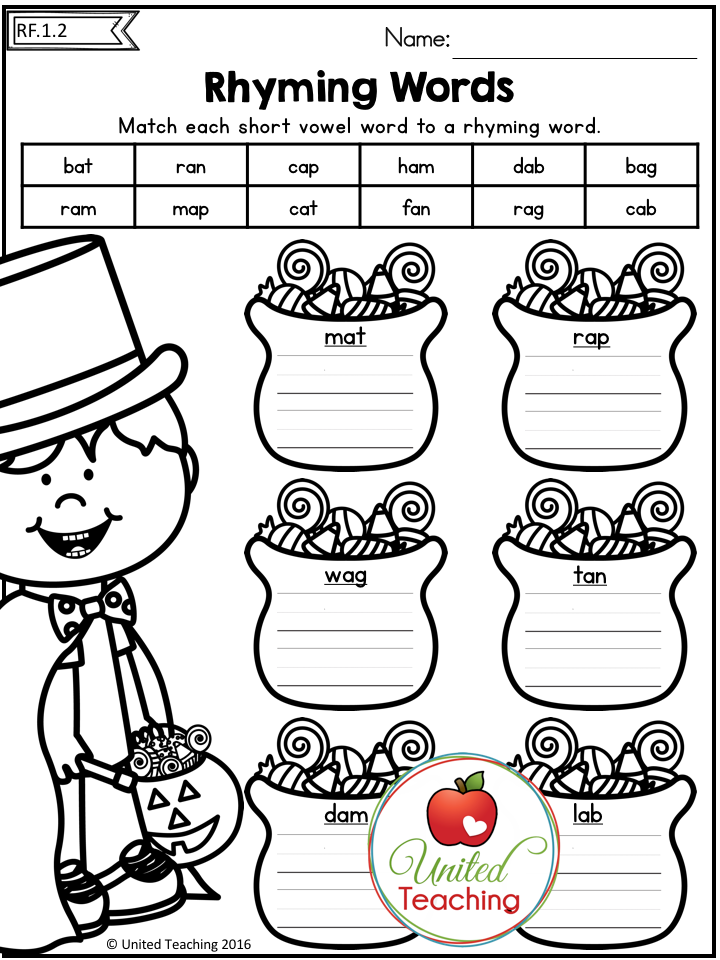
She grew up on a Christmas tree
She had needles,
The cone looked at us from above,
Didn't overlook anything. (Maxim Fomichev)
***
I was presented with a ring,
It looked like an egg,
,it decorated a hand,
sometimes caught up with boredom,
,because it was old. (Snezhana Lapteva).
***
There was a bird,
Just like a small one,
Flying around the house,
Grain pecking
Here is such a bird. (Snezhana Lapteva)
***
We have a girl in the group,
Her name is Umochka,
She has a beautiful bag,
She gives it to everyone to play,
900 (Ella Akramova).***
A mouse ran into a hole,
She held a crust in her teeth.
She will gnaw it
And she will be very lucky. (Maxim Fomichev).
***
The sun in the window,
All the time shone in the eyes.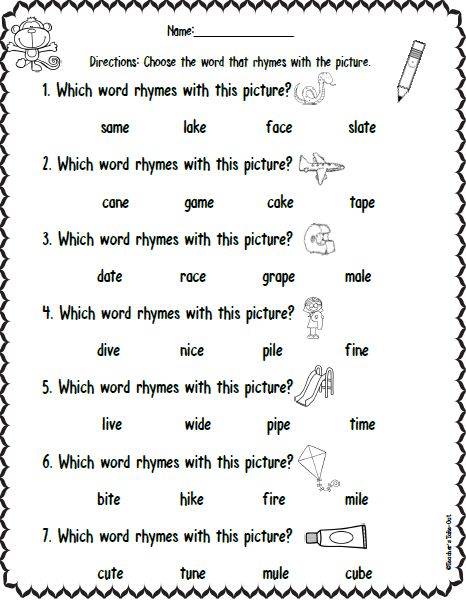
Suddenly a wasp flew by!
Oh, it's the sun!
If it didn't shine in my eyes,
I wouldn't be bitten by a wasp. (Collective).
***
There was a river,
It was hot as a stove.
She ran in the forest,
kept everyone warm. This is such a caring river. (Lena Laryushkina).
There was a pencil,
It looked like a garage
He drew,
And painted all the garages.
This is such a fun pencil. (Polina Levitskaya).
***
There was a pump,
It was called a vacuum cleaner.
He vacuumed so cleanly,
That he swept everyone away. (Timur Siraev).
***
There was a cat,
Her name was midge.
She was small,
She slept on my palm. (Vova Tatarintsev).
***
My mother is like a butterfly,
Fluttered all day,
I was cleaning everything, I was so tired.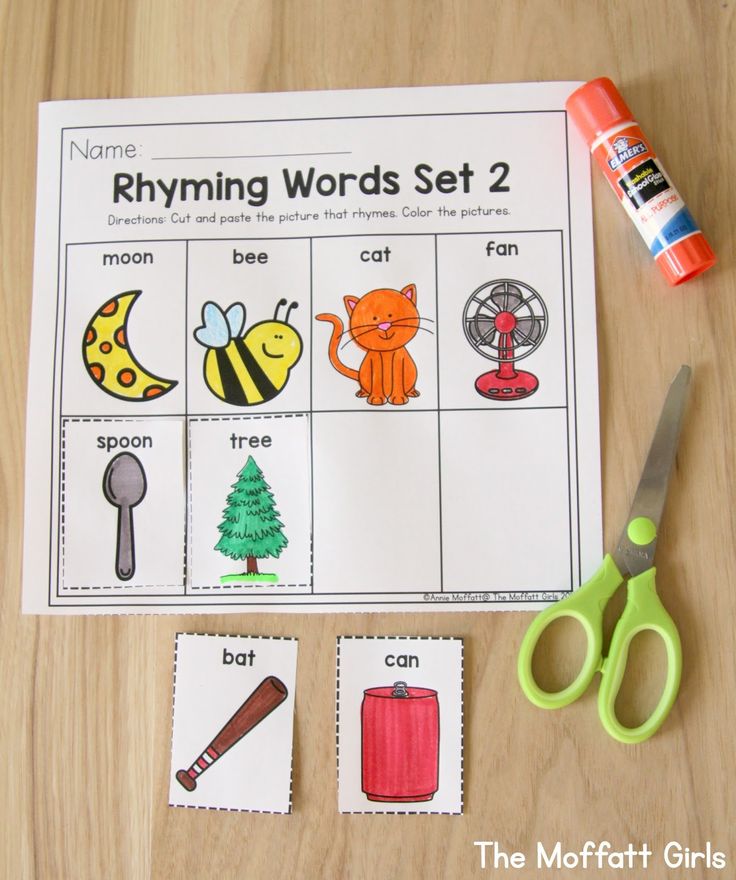
I brought a pillow,
I cleaned everything myself. (Lena Laryushkina).
This is good for rhyme - 7 online tools for rhyming words and writing terrible poems
The idea for this article was sicked by my ladder, which wanted a quick quick poem for your class. I was really surprised how terrible writer's block is. stopped me in my tracks and stopped me from coming up with good rhyming words and a frenetic poem. It took me a while, but I managed to put together a good one. Milton and his buddies will laugh, but I don't think they will throw eggs at me from there.
I'm sure you know that creating rhyming verses - albeit a high level one - has its uses. From greeting cards to class assignments, from lovers to Facebook status updates, rhyming words to create a poem are an in-demand art form. I believe that if aspiring poets can have their own poetry applications and collections of poems on the Internet, we amateurs can do a little rhyming help. These rhyming instruments can spout horrible verses, but you might enjoy wordplay.
These rhyming instruments can spout horrible verses, but you might enjoy wordplay.
Rhyme Brain opens with a simple yet attractive interface. This is a multilingual rhyming generator that speaks Dutch, Spanish, Russian, German, French and English. Enter your word in the large field and press Enter. Rhyme Brain generates and displays rhyming words in the language of your choice. Rhyme Brain uses machine learning to match keywords with their phonetic equivalents. Results also include almost rhymes and oblique rhymes (imperfect rhymes). Rhyme Brain can also provide portmanteau and alliteration for you.
The rhyme generator database contains 2.6 million words to match your word.
B-Rhymes says it's a rhyming dictionary that doesn't have words for what it does and doesn't. He tries to match rhyming words that sound good together. B-rhymes generate hemispheres that follow phonetic principles, although they can rhyme according to syllables. B-Rhymes really gives you the opportunity to get away without sounding too corny with your verses.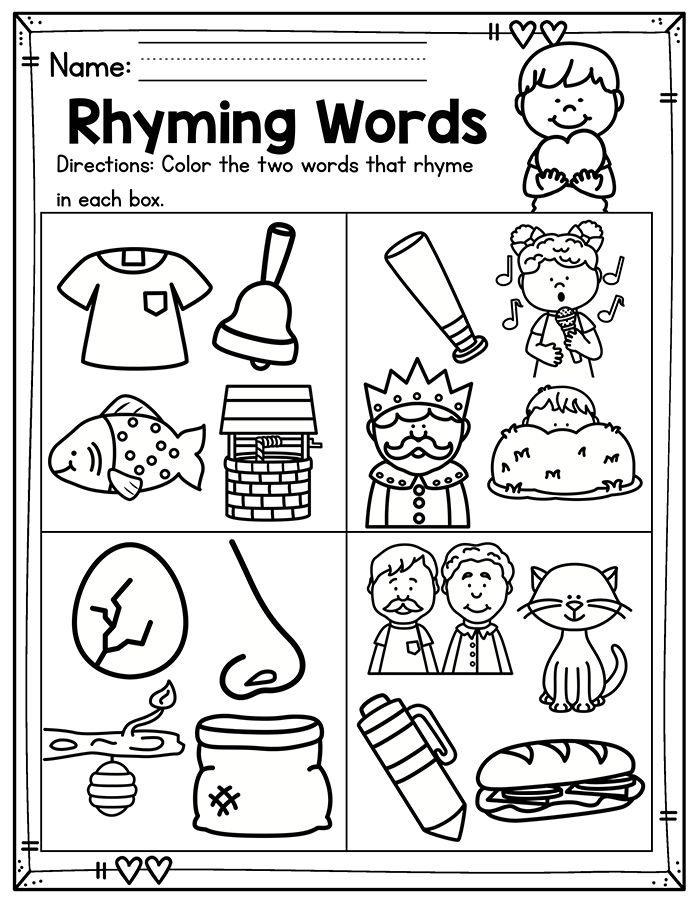 B-Rhymes provides each rhymed word with a pronunciation and meaning that indicates its power.
B-Rhymes provides each rhymed word with a pronunciation and meaning that indicates its power.
You can also try the B-Rhymes app for iPhone and Android.
The Scholastic site seems just right for kindergarten students, although it is a good teaching aid. Reggie Loves to Rhyme is interactive fun colorful pictures and sounds. It's designed like a game. As you can see in the screenshot, the kids will have to select a room and enter it, they will have to select objects to make them rhyme with another object in that room.
Scholastic is one of the oldest and largest educational companies in the world with a global presence in 150 countries.
WikiRhymer is a neat, community-created website in the best wiki tradition. Rhymes can be found in the categories of pure rhymes, final, near, close, and mosaic. WikiRhymer has a forum where you can discuss poetry, songs, and anything else related to vowels. The site is small because it is new, but we hope it will grow with some exposure.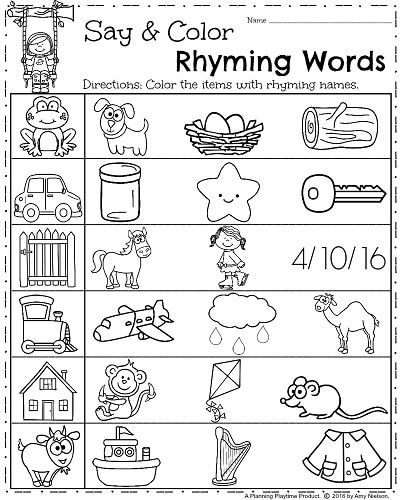
The site was founded by a songwriter (Bud Tower).
You just have to take the word... because it comes from Merriam-Webster. One of the oldest and most respected names in the English lexicological space has a well-developed vocabulary designed for children. Word Central has a dictionary, a thesaurus, a rhyming dictionary, and interactive games. The rhyming dictionary has a long list of words that might rhyme with your keyword. I've tried a few words that aren't all that common; the results were impressive. You should expect a resource like Merriam-Webster to have a large index of words to retrieve.
According to the FAQ, the online version contains over 70,000 entries, 730 color illustrations, 300 paragraphs of word history, 170 paragraphs of synonyms, and many examples showing how words are used in context.
Rhymes & Chimes has an attractive facade to live up to its name. The mission of the rhyming dictionary is to become the world's largest collection of rhymes created by man.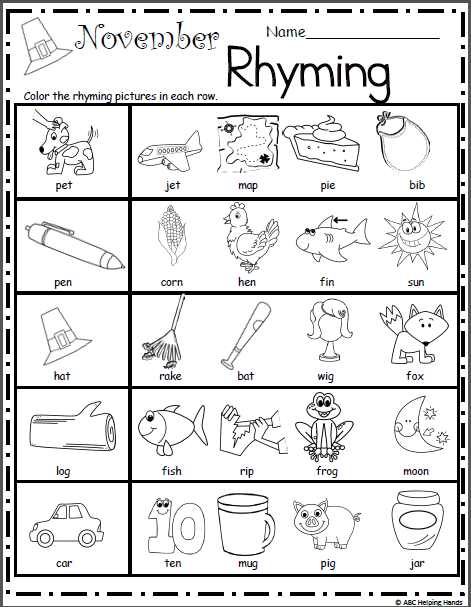 The results are broken down by syllables (from 1 to 3) and you can also search for translations of the word, its usage in phrases and quotes, and other transformations, as you can see in the screenshot. One of the unique features is that it also provides you with citation styles for different types of documents.
The results are broken down by syllables (from 1 to 3) and you can also search for translations of the word, its usage in phrases and quotes, and other transformations, as you can see in the screenshot. One of the unique features is that it also provides you with citation styles for different types of documents.
What Rhymes With is a simple, no-nonsense dictionary. You can use search to quickly find words that rhyme with each other. The dictionary searches by pronunciation. The results are returned in an easy-to-read flat format. The words are also hyperlinks that you can click on to jump to more rhyming words.
Think of these seven tools as the archetype of this type of word usage. These seven are definitely some of the most beautiful I've come across in my research. I didn't have to dig deep because rhyming dictionaries are as common as pennies. Although good, as they are rare. Don't forget to check out what my friend Ryan wrote a few years ago - a powerful free rhyme generator called VersePerfect that you can download and use.


